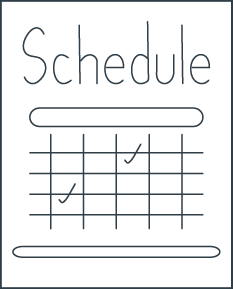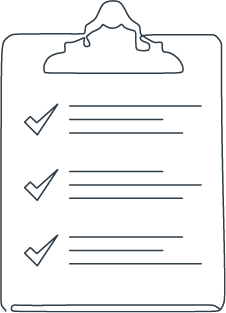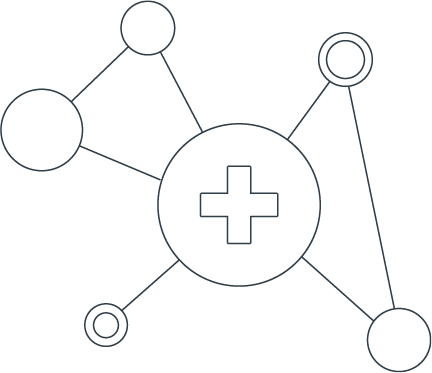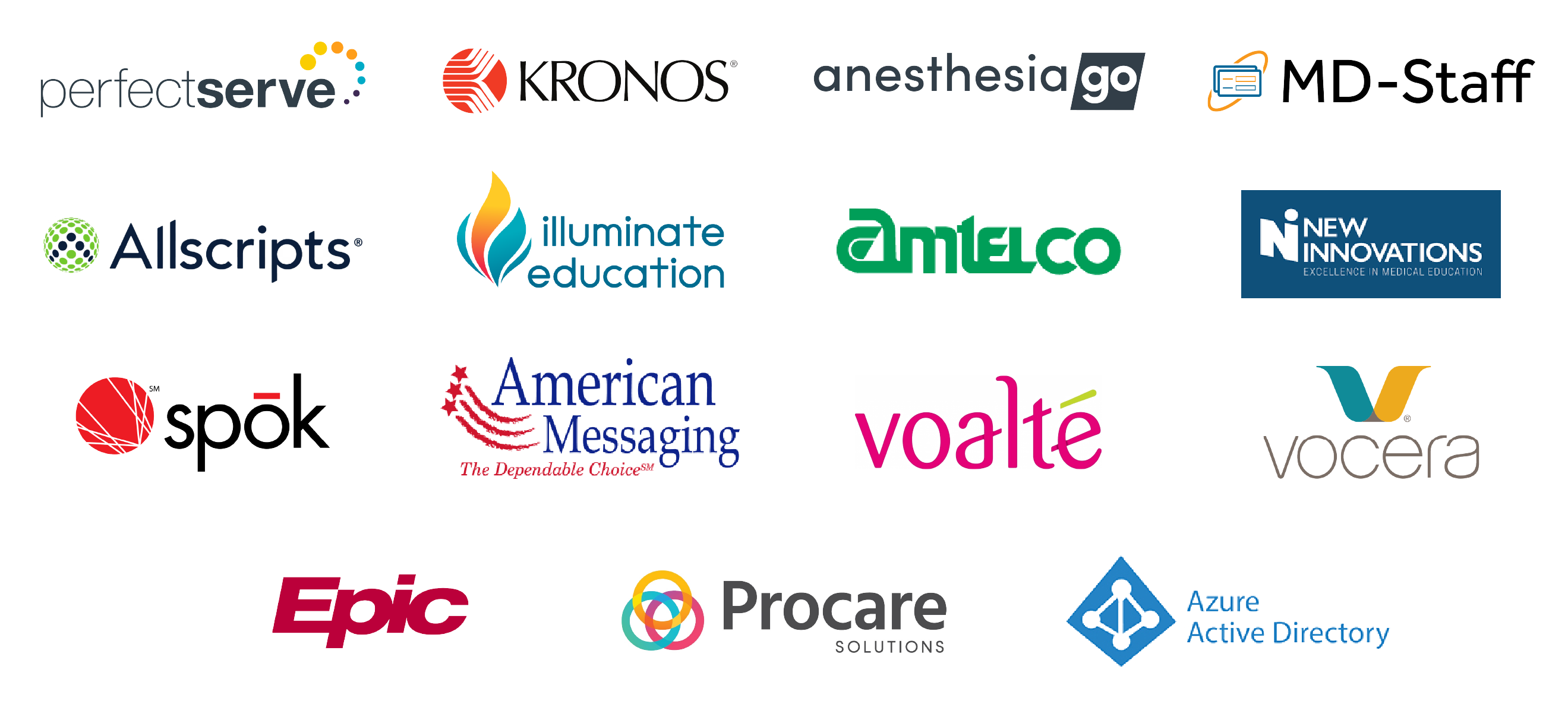Live Session
A Roadmap for Change Management Projects
Register NowTABLE OF CONTENTS
Residency is a challenging yet vital period in a medical career, often characterized by long hours, heavy workloads, continuous learning, and significant responsibility. To ensure the learning experience for residents is as focused as possible, it’s essential to establish a well-structured and efficient residency schedule.
The problem? Creating such a schedule can be tedious for program managers when they do it by hand, and it’s often very difficult to avoid making errors. More often than not, the process involves multiple revisions, several instances of human error, and unintentional shift imbalances. An automated scheduling solution offers a much more effective way to incorporate key residency scheduling components while reducing these administrative burdens.
The sheer number of requirements and other considerations complicates residency schedules and makes building them a frustrating task for program administrators. For example:
Independent Program Requirements
Specific Constraints and Rules
Other Considerations
Accounting for requirements like these can be done by hand, but this inevitably leads to schedule gaps, errors, or imbalance across residents and shifts. Any corrections that need to be applied result in multiple iterations of a schedule being created, provider confusion, and increasing frustration on the way to a final schedule. Moreover, if errors aren’t caught and fixed, it can lead to residents either exceeding or failing to meet their schedule requirements.

Residents and program managers already have a lot on their plates. Adding more frustration in the form of schedule builds that take hours upon hours and often lead to unbalanced schedules should be avoided at all costs. As just one example of problems that can arise, unequal shift distribution can be a major drain on satisfaction for residents. Despite the fact that schedulers have the best of intentions, consistent unfair schedules can easily be misconstrued as favoritism.
Creating schedules manually makes it almost impossible to ensure that shifts, on-call duties, and patient load are spread evenly among all residents at any given time. People are only human, after all!
Effective communication and engaged residents are key to optimized scheduling. By giving residents the ability to proactively communicate about their scheduling preferences, program managers can ensure that these preferences—such as time-off requests—are accounted for well in advance.
When building a schedule by hand, trying to balance a multitude of vacation requests, individual schedule preferences, and last-minute changes in real time can lead to intense levels of frustration with a repetitive process that feels more like trial and error than building a precise clinical schedule.


When it comes to care delivery, smooth shift transitions are vital for effective handovers and positive patient experiences. An automated scheduling solution can accurately staff the appropriate number of providers for each shift based on demand and will alert schedulers when any preset rule is broken. For example, if a resident is scheduled beyond their hour limits or they aren’t scheduled with the appropriate attending, a scheduler would be notified.
Manual schedule creation is prone to human error and can even jeopardize care delivery. Technology can auto-generate schedules well in advance, enabling both schedulers and providers to have peace of mind knowing that even challenging shift changes, such as transitions and handovers, will have sufficient staff to manage patient workload effectively.
It won’t surprise you to learn that resident scheduling software automates the creation of residency schedules. But trust us—it’s a big deal! Hand-built schedules come with a variety of stressors, they’re hard to create without making errors, and they just take too much time. Residency programs can make use of optimized scheduling technology to streamline this process significantly.
Lightning Bolt can enhance any residency program by optimizing the resident schedule, automating shift changes and time-off requests, and accounting for unique rules like residency hour maximums and shift blocks. Lightning Bolt can also ensure that on-call and shift schedules are fair and equitable and gives residents full schedule transparency, meaning they can access the schedule anywhere, any time with a mobile or desktop app. For one health system, Lightning Bolt helped to reduce the time spent creating schedules by 82%.


– Benson Won
Chief Administrative Officer Department of Dermatology, UC Davis

Streamlining the schedule creation process is one of the major benefits of an automated scheduling solution. After entering provider preferences and creating unique rules, a scheduler can auto-generate an optimized and balanced resident schedule in a matter of minutes that avoids the hurdles of manual scheduling.
Some features specific to Lightning Bolt include drag-and-drop scheduling, which allows for easy edits and real-time adjustments; automated shift allocation, which automatically assigns shifts to the right resident; and schedule conflict resolution. The latter allows Lightning Bolt to build schedules without breaking any rules or preferences put in place by a scheduler. However, in the event that a rule must be broken, the customizable nature of rule priority within the Lightning Bolt system means that it will break the lowest-priority rule first. When a rule is broken, the schedule administrator is always notified, and they can decide whether to accept or reject the change.
Resident scheduling software should facilitate seamless communication and collaboration among program managers, schedulers, and residents. With Lightning Bolt, resident preferences can be entered and managed in real time, so when a schedule is built, their time-off requests, shift preferences, and other details are automatically accounted for. This means keeping track of resident preferences is no longer a game of guesswork that necessitates heavy use of sticky notes.
Other capabilities, such as real-time schedule change notifications and schedule sharing, make communication easier and clearer throughout the entire residency team. When any changes are made to the schedule, all who are affected are instantly notified. Schedule sharing creates a single source of truth for all providers, meaning that one real-time schedule exists and can be accessed at any time from any device.


Adhering to resident shift requirements and constraints is crucial to producing a fair and accurate schedule for residents. Duty hour regulations are put in place to ensure shift fairness and promote resident wellness. With an automated scheduling solution, these rules can be applied automatically, ensuring resident shift hours are always in compliance with prevailing regulations.
Lightning Bolt does this with features like automatic tracking of work hours, violation alerts when a resident is over-scheduled, and access to rich analytics. Data from analytics can be tracked, measured, and actioned to apply shifts fairly and analyze when a resident may be at risk of burnout.
The capabilities of resident scheduling software can be enhanced even further with key integrations.
Here are a few integrations to consider:
Block Scheduling
Lightning Bolt integrates with New Innovations’ block scheduling to track and manage resident blocks, which are vital for graduation. It provides detailed information on completed and outstanding blocks, ensuring all prerequisites are met before graduation. Additionally, rules can be set to automatically schedule required blocks, ensuring residents fulfill all requirements.
Duty Hours
Similar to block scheduling management, resident duty hours must be tracked and managed for graduation purposes. With Lightning Bolt, each shift worked throughout the day (on-call, in clinic, etc.) will show up in the daily calendar within New Innovations.
Lightning Bolt seamlessly integrates with MyEvaluations, a comprehensive residency management service. Through this integration, health systems can automate:

Lightning Bolt supports more than 200 integrations with other clinical systems, which means your clinical communication platform, call center software, demographics, EHR, payroll system, patient scheduling platform, and more can all be tightly integrated with an accurate, up-to-date schedule. These customizable integrations facilitate advanced workflows and care team coordination across your organization.

Creating a fair and compliant residency schedule by hand is often an exercise in futility for program managers and shift schedulers. The downstream impacts of an inadequate schedule are varied, but for residents in particular, it can create excess stress during an especially difficult time in their careers, and it can even prevent them from meeting residency requirements. With persistent staffing shortages and elevated levels of burnout across the healthcare industry, residents need as much support as possible to keep engagement high and maintain their passion for working in the medical field.
Embracing automated scheduling software like Lightning Bolt helps maintain shift balance, fulfill all residency requirements, and enhance satisfaction for residents, program managers, and schedulers alike.


– Maureen Conlon
Provincial Health Services
Authority, Vancouver, BC, Canada